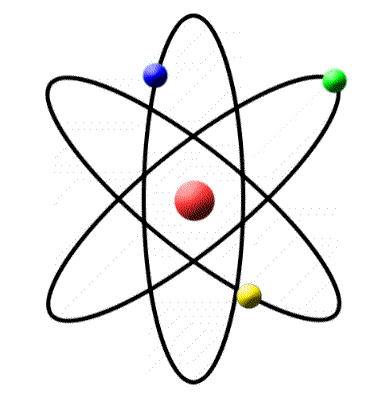Which of the following is not correct about Bohr model of the hydrogen atom?
- An electron in an atom could revolve in certain stable orbits without the emission of radiant energy
- Electron revolves around the nucleus only in those orbits for which angular momentum $L_n = \frac{n h}{2 \pi}$
- When electron make a transition from one of its stable orbit to lower orbit then a photon emitted with energy $h\upsilon = E_{f} -E_{i}$
- Bohr model is applicable to all atoms
The Correct Option is D
Solution and Explanation
Top Questions on Atoms
- Assertion (A): The potential energy of an electron revolving in any stationary orbit in a hydrogen atom is positive.
Reason (R): The total energy of a charged particle is always positive. - Prove that, in the Bohr model of the hydrogen atom, the time period of revolution of an electron in the \( n \)-th orbit is proportional to \( n^3 \).
- ........ is a potent vasodilator.
- Which one of the following corresponds to the wavelength of line spectrum of H atom in its Balmer series? (R = Rydberg constant)
- Atomicity of oxygen in ozone molecule is:
Concepts Used:
Atoms
- The smallest unit of matter indivisible by chemical means is known as an atom.
- The fundamental building block of a chemical element.
- The smallest possible unit of an element that still has all the chemical properties of that element.
- An atom is consisting of a nucleus surrounded by one or more shells of electrons.
- Word origin: from the Greek word atomos, which means uncuttable, something that cannot be divided further.
All matter we encounter in everyday life consists of smallest units called atoms – the air we breath consists of a wildly careening crowd of little groups of atoms, my computer’s keyboard of a tangle of atom chains, the metal surface it rests on is a crystal lattice of atoms. All the variety of matter consists of less than hundred species of atoms (in other words: less than a hundred different chemical elements).

Every atom consists of an nucleus surrounded by a cloud of electrons. Nearly all of the atom’s mass is concentrated in its nucleus, while the structure of the electron cloud determines how the atom can bind to other atoms (in other words: its chemical properties). Every chemical element can be defined via a characteristic number of protons in its nucleus. Atoms that have lost some of their usual number of electrons are called ions. Atoms are extremely small (typical diameters are in the region of tenths of a billionth of a metre = 10-10 metres), and to describe their properties and behaviour, one has to resort to quantum theory.